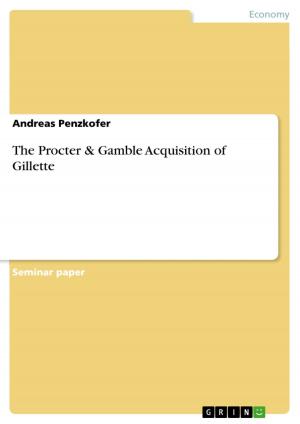The relationship between phonology and orthography and the issue of orthographic reform for English
Nonfiction, Entertainment, Drama, Anthologies| Author: | Stephanie Schmitz | ISBN: | 9783638522113 |
| Publisher: | GRIN Publishing | Publication: | July 18, 2006 |
| Imprint: | GRIN Publishing | Language: | English |
| Author: | Stephanie Schmitz |
| ISBN: | 9783638522113 |
| Publisher: | GRIN Publishing |
| Publication: | July 18, 2006 |
| Imprint: | GRIN Publishing |
| Language: | English |
Seminar paper from the year 2003 in the subject English Language and Literature Studies - Linguistics, grade: 2,3, University of Cologne (Englisches Seminar), course: Hauptseminar: Writing Systems, 14 entries in the bibliography, language: English, abstract: Phonological developments in English after the standardization of the orthography and their consequences for the relationship between phonology and orthographyThis essay first explains what sound change is and then describes differences between Middle English and New English concerning consonant and especially vowel patterns due to the Great English Vowel Shift. Then the standardization of the orthography and phonological changes after the 17th century are discussed. Finally, the results of these changes for the relationship between phonology and orthography today are depicted. Sound change is referred to modifications in the language that lead to the introduction or loss of phonological elements (Lehmann 1992: 183). Sound change means a modification of distinctive features of the phonemes (Lehmann 1992: 191). Today sound changes are mostly indicated by means of distinctive features rather than by means of rules as it was in earlier times, because an indication by means of distinctive features is more precise. Generally, a sound can change in its place or manner of articulation, in the position of the velum or in its glottal articulation (Lehmann 1992: 191-193). Furthermore, changes may take place in the characteristic features of a vowel, i.e. in the degree of vowel opening, in the degree of fronting or in the labial articulation (Lehmann 1992: 193-194). A sound change can either be conditioned or unconditioned. Within a conditioned change an allophone of a phoneme changes only in a specific environment and stays the same in all others, whereas within an unconditioned change, a phoneme changes in all possible environments, which happens very seldom (Lehmann 1992: 190-191). Simple treatments of sound changes are normally unrealistic, i.e. to assume that all phonemes /x/ have become /y/ at time z (Lehmann 1992: 190). Usually a tabloid which shows that each phoneme /x/ became /y/ and each phoneme /y/ became /z/ depicts only the most common cases. But often a change is restricted to a certain environment and does not take place in others. Changes can be interpreted as addition, as alteration or as loss of a feature. Accordingly, when changes are described by rules they are described as rule addition, rule loss or rule recording. (Lehmann 1992: 204-205). A 'sound change only occurs when there is a disruption of the phonological system'. This disruption may take place by two mechanisms, either by merger or by split. [...]
Seminar paper from the year 2003 in the subject English Language and Literature Studies - Linguistics, grade: 2,3, University of Cologne (Englisches Seminar), course: Hauptseminar: Writing Systems, 14 entries in the bibliography, language: English, abstract: Phonological developments in English after the standardization of the orthography and their consequences for the relationship between phonology and orthographyThis essay first explains what sound change is and then describes differences between Middle English and New English concerning consonant and especially vowel patterns due to the Great English Vowel Shift. Then the standardization of the orthography and phonological changes after the 17th century are discussed. Finally, the results of these changes for the relationship between phonology and orthography today are depicted. Sound change is referred to modifications in the language that lead to the introduction or loss of phonological elements (Lehmann 1992: 183). Sound change means a modification of distinctive features of the phonemes (Lehmann 1992: 191). Today sound changes are mostly indicated by means of distinctive features rather than by means of rules as it was in earlier times, because an indication by means of distinctive features is more precise. Generally, a sound can change in its place or manner of articulation, in the position of the velum or in its glottal articulation (Lehmann 1992: 191-193). Furthermore, changes may take place in the characteristic features of a vowel, i.e. in the degree of vowel opening, in the degree of fronting or in the labial articulation (Lehmann 1992: 193-194). A sound change can either be conditioned or unconditioned. Within a conditioned change an allophone of a phoneme changes only in a specific environment and stays the same in all others, whereas within an unconditioned change, a phoneme changes in all possible environments, which happens very seldom (Lehmann 1992: 190-191). Simple treatments of sound changes are normally unrealistic, i.e. to assume that all phonemes /x/ have become /y/ at time z (Lehmann 1992: 190). Usually a tabloid which shows that each phoneme /x/ became /y/ and each phoneme /y/ became /z/ depicts only the most common cases. But often a change is restricted to a certain environment and does not take place in others. Changes can be interpreted as addition, as alteration or as loss of a feature. Accordingly, when changes are described by rules they are described as rule addition, rule loss or rule recording. (Lehmann 1992: 204-205). A 'sound change only occurs when there is a disruption of the phonological system'. This disruption may take place by two mechanisms, either by merger or by split. [...]















